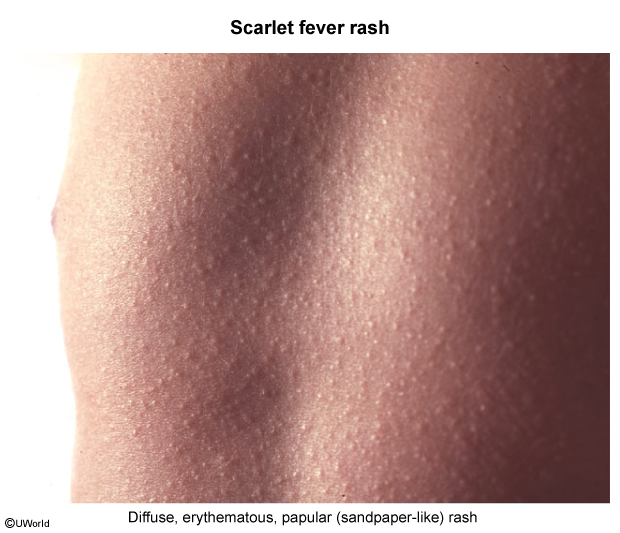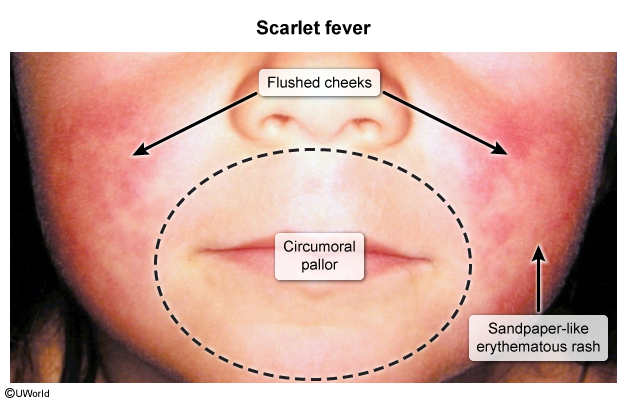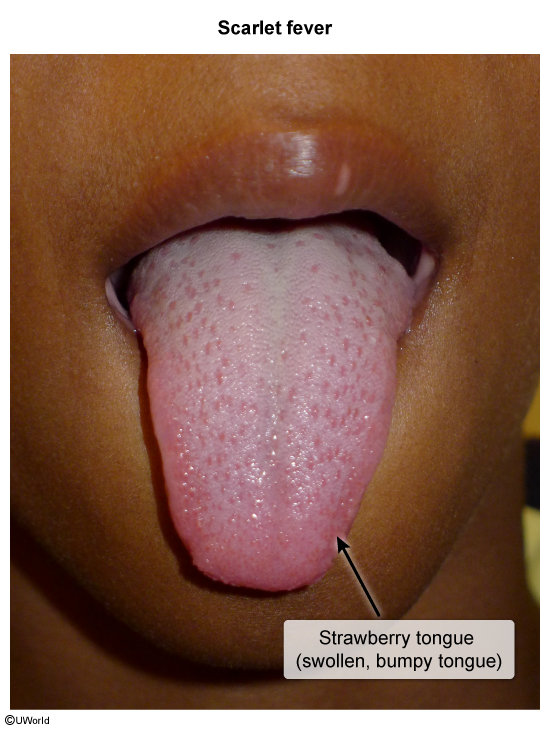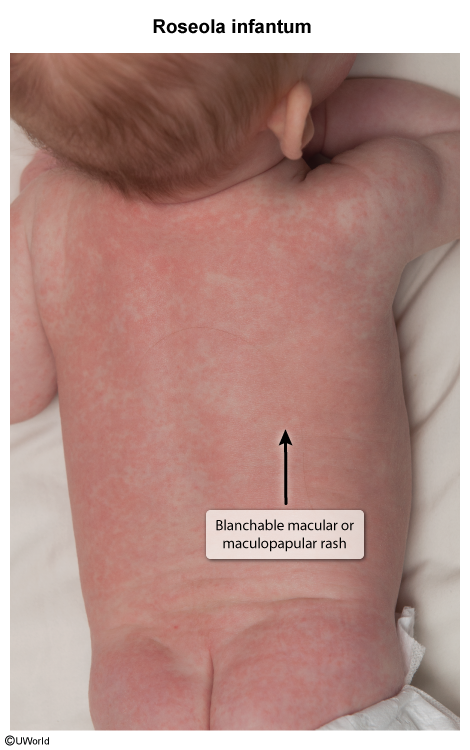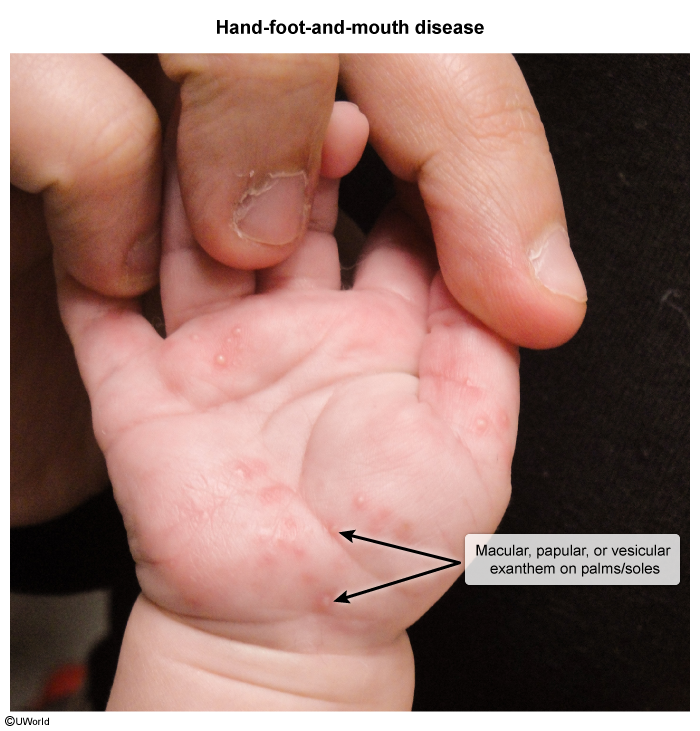Scarlet Fever
Article Sections
Introduction
Scarlet fever is characterized by a fine, erythematous, papular (sandpaper) rash that occurs in patients infected with group A Streptococcus. Scarlet fever is most commonly associated with streptococcal pharyngitis, but it can develop following other group A streptococcal infections (eg, after a wound infection or burn).
Pathophysiology and risk factors
Certain strains of Streptococcus pyogenes produce pyrogenic exotoxins that cause delayed-type skin reactivity, resulting in vasodilation and increased capillary permeability. This leads to the characteristic scarlet fever rash. Transmission typically occurs through saliva or nasal secretions. Therefore, risk factors for scarlet fever include the following:
- Close contact with individuals infected with pyrogenic exotoxin–producing S pyogenes, particularly in crowded environments (eg, schools, day care centers)
- Poor hygiene practices (eg, sharing beverages or toothbrushes, improper food handling)
Continue Learning with UWorld
Get the full Scarlet Fever article plus rich visuals, real-world cases, and in-depth insights from medical experts, all available through the UWorld Medical Library.
Figures
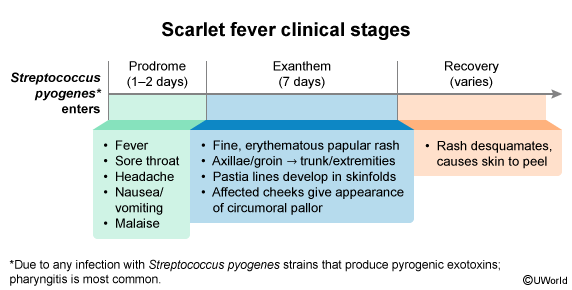
Images
